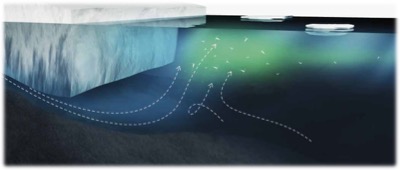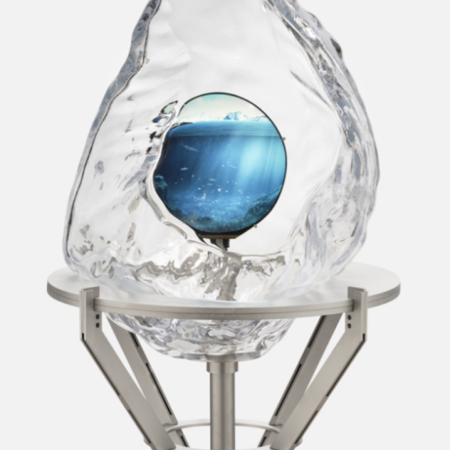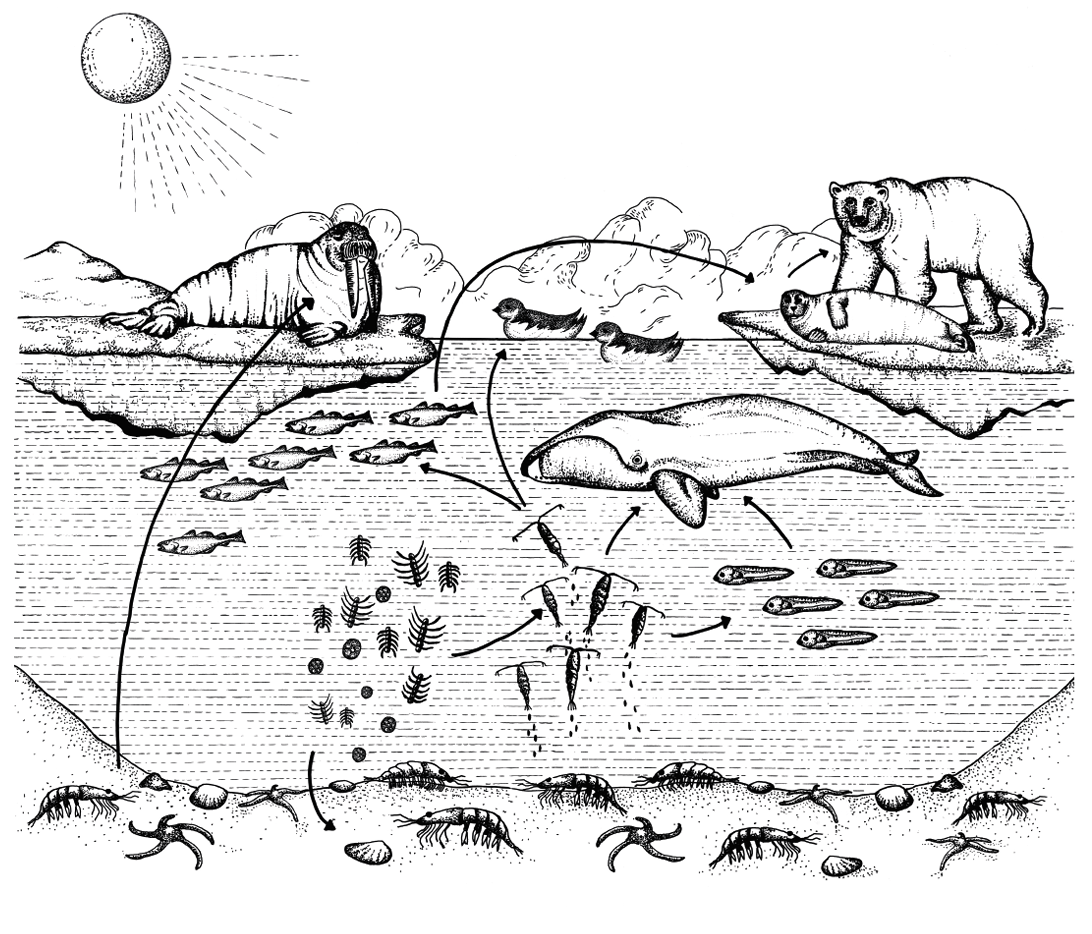THE SPRING BLOOM
- The nutritious Icefjord
- The importance of the sea ice for the spring bloom
- The spring bloom
You solve the tasks by using
- Text
- Audio
- Drawing tools
- Pictures
In the book you can find pictures on the subject.
Read about why the copepods are moving north.
The meltwater runs out under the glacier and whirls nutritious bottom water up in the light.

The copepods spend the winter at the bottom of the sea.
In spring the ice breaks, and the ice algae caught just below it start to bloom.
When this happens, the copepods rise up and eat themselves fat in the nutritious plankton.
- Why are there most nutrients and plankton near the glacier front?
- What is the difference between meltwater and water from the fjord?
Who benefits from the copepods getting fat?
Make a list of the animals you see in the food web.
What do they eat?
Why is the world that arises beneath the ice called the grassy plains of the Arctic?
If the ice breaks early, or there is no ice at all, the blooming of plankton happens too soon.
The copepods having spent the winter at the bottom of the sea risk to rise up when the bloom is over. Then they are not in time to eat themselves fat.

How does it affect the food web if the blooming happens early?
Why are there most copepods close to the glacier front?
What does a copepod look like?
The meltwater runs out under the glacier and whirls nutritious bottom water up in the light.

The copepods spend the winter at the bottom of the sea.
In spring the ice breaks, and the ice algae caught just below it start to bloom.
When this happens, the copepods rise up and eat themselves fat in the nutritious plankton.
- Why are there most nutrients and plankton near the glacier front?
- What is the difference between meltwater and water from the fjord?
Who benefits from the copepods getting fat?
Make a list of the animals you see in the food web.
What do they eat?
Why is the world that arises beneath the ice called the grassy plains of the Arctic?
If the ice breaks early, or there is no ice at all, the blooming of plankton happens too soon.
The copepods having spent the winter at the bottom of the sea risk to rise up when the bloom is over. Then they are not in time to eat themselves fat.

How does it affect the food web if the blooming happens early?
Why are there most copepods close to the glacier front?
What does a copepod look like?





